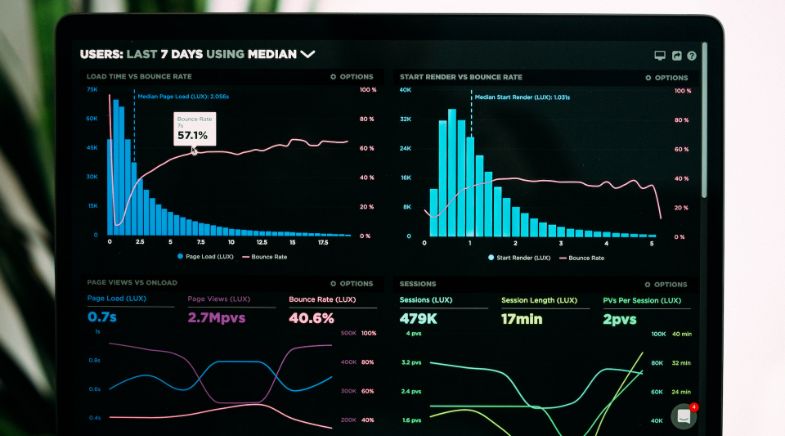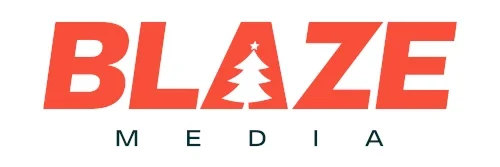You’ve heard of PPC, right?
It stands for pay-per-click and it’s a form of advertising that has been helping businesses generate revenue and leads using the power of search engines.
PPC has been around since the mid 90’s and, as with most things digital, has advanced and transformed dramatically.
Thanks to marketing wizards and software wizz kids PPC has developed into a sophisticated and desired advertising tool.
In this article, we will discuss some of the PPC trends that are developing in the advertising world, which highlight just how far it’s come in the last 30 years.

PPC Trends for 2024
Here are some PPC trends to keep an eye on in 2024:
AI and Automation
AI-powered tools and automation are becoming increasingly integral to PPC campaigns.
They’re all the craze in this day and age so it’s no surprise it’s making waves in the discipline.
AI is supposed to make things easier for users and not replace them completely…although, if you’ve watched the movie I-Robot you might disagree.
Using AI, you’ll be able to streamline processes and further optimise campaigns.
The one thing AI can’t do is read emotion, so it won’t know the difference between knowing if your boss is upset about a project, or if they are just in fact, hangry.
But it’s extremely good at reading and analysing data at lightning speed – and data plays a huge role in PPC.
Imagine having an assistant who can interpret 1000’s of data points in the blink of an eye and make a suggestion to tweak your campaign.
That’s what AI can do.
Using integration tools you get help managing bidding strategies, ad placements, and budget allocations.
AI-powered chatbots and personalisation algorithms also enhance the user experience by tailoring ad content and responses to individual preferences.
As a result, AI and automation not only save time and resources but also improve the overall effectiveness of PPC campaigns, ensuring that advertisers reach the right audience with the right message at the right time.
For a more in-depth look at AI, check out our blog which covers all you need to know about AI writing tools.
Audience-Centric Targeting
Advertisers are focusing more on audience targeting rather than just keywords.
Leveraging first-party data and building audience segments for personalised ads is a growing trend.
With the vast amount of data available, advertisers can now understand their target demographics, behaviours, and preferences more comprehensively.
This information allows for the creation of finely tuned audience segments, enabling advertisers to craft tailored ad campaigns that resonate with specific groups.
Audience-centric targeting allows advertisers to maximise their budgets for greater efficiency, resulting in higher conversions and engagement.
Business owners should focus on delivering high-quality content that is relevant to their audience.
When you run a PPC campaign that is audience-centric you’re doing exactly that.

Video Advertising Growth
As the song by The Buggles goes – ‘Video killed the radio star’.
You’re probably wondering why we just quoted a popular 70’s song to highlight the growing trend of video advertising in PPC.
The truth is that video did kill radio and it has continued to dominate ever since.
Video content has emerged as a powerful medium to capture audience attention and convey compelling messages.
Statistics show that in 2023 the current average viewer spends 17 hours a week watching digital videos.
That’s more than half a day dedicated to just watching video content.
That’s longer than watching the Lord of the Rings trilogy back-to-back
Or nearly as long as watching all of the Harry Potter films back-to-back.
We love our fantasy movies if you can’t tell.
As more users consume video content across various online platforms, integrating video ads into PPC campaigns offers an opportunity to engage audiences in a more immersive and emotionally resonant way.
The level of detail and depth you can go to using video is unmatched, which is why it is such an attractive option for advertising.
Imagine your company sells men’s electric razors.
Using video you can highlight the unique angles that the razor can trim your beard at.
As well as show how smooth the finish is.
All in HD of course.
Try doing the same with a blog post and some pictures.
It just isn’t possible!
With video’s ability to tell a story, demonstrate products, and evoke emotions, it has become an essential component of PPC strategies, enhancing brand awareness, engagement, and ultimately, conversion rates.
As video advertising continues to grow in popularity and effectiveness, it is poised to play an even more integral role in the future of PPC campaigns.
Voice Search Optimisation
Thanks to Amazon’s Alexa and Apple’s Siri, voice search optimisation is making a big impact in the world of PPC.
Every time you say ‘Alexa’ you’re part of history in the making…in the form of the ever-evolving process of voice search optimisation.
Voice search optimisation involves tailoring ad content and keywords to align with natural language and conversational queries.
PPC campaigns that incorporate voice search optimisation can benefit from improved visibility and relevance, as they are more likely to be featured in voice search results.
As the use of voice search technology continues to grow, integrating voice search considerations into PPC strategies becomes essential for staying competitive and effectively reaching audiences through this increasingly popular channel.
‘Siri, who is the best marketing agency in Liverpool?’.
Privacy Concerns and Regulations
It’s not surprising that privacy concerns and regulations are being mentioned.
It seems like our data is being breached every week with the amount of scandals that hit the headlines.
And with data being dubbed as ‘The new oil’ it’s easy to see why this is happening.
Stricter regulations, such as the General Data Protection Regulation (GDPR) in Europe and the California Consumer Privacy Act (CCPA) in the United States, have put stringent requirements on how data can be collected, used, and stored.
Advertisers now need to navigate a complex landscape of consent, data transparency, and user rights.
This means that PPC campaigns must prioritise user privacy by ensuring compliance with these regulations, obtaining explicit consent for data usage, and offering transparency about data collection practices.
The more open you are with users about what you’re doing with their data and always seeking their permission, the more trusting you can become.
Leading to more successful and sustainable PPC campaigns.
E-commerce Integration
There is a reason they say the high street is dying.
Most people prefer to shop from the comfort of their own home (or bed).
This means no need to walk around the city centre in the pouring rain trying to find a nice outfit for your mate’s birthday night out.
As online shopping grows, so does the need for PPC and e-commerce integration.
The synergy between PPC advertising and e-commerce platforms allows businesses to seamlessly connect their ads to the entire customer journey, from initial click to final purchase.
This integration enables dynamic product ads, shopping feeds, and remarketing campaigns that can directly drive sales.
With the rise of platforms like Google Shopping and social media marketplaces, advertisers can showcase their products to a highly targeted audience.
Tracking and analytics tools integrated with e-commerce platforms provide valuable insights into customer behaviour, allowing for better optimisation of PPC campaigns.
Attribution Modelling
A customer’s journey is very rarely a straight line.
In fact, it can usually consist of multiple touchpoints, all of which play their own role in converting the customer.
Advertisers are exploring more advanced attribution models to better understand the customer journey and allocate ad spending more effectively
PPC campaigns were often evaluated based solely on the last-click attribution model.
Meaning the final touchpoint before the conversion was given full credit.
This is oversimplifying the true customer journey in most cases.
Now we can use attribution models to get a more detailed and sophisticated analysis of the customer journey.
Understanding how different marketing channels and touchpoints all contribute to a conversion.
Doing so can help optimise PPC campaigns even further.
Interactive Ads
Boring cookie-cutter ads won’t cut it anymore (excuse the pun).
Interactive ads are leading the way.
What are interactive ads you ask?
These are ads that offer a dynamic and engaging way to capture the attention of online audiences.
Interactive ads invite users to actively participate, making the advertising experience more immersive and memorable.
Features such as quizzes, polls, playable ads, and shoppable content encourage user engagement and interaction, fostering a sense of connection with the brand.
Interactive ads also provide valuable data on user preferences and behaviours, enabling advertisers to refine their targeting and messaging for better campaign performance.
Interactive ads are becoming one of the leading innovative options for marketers to use to attract new customers.
An astounding 88% of marketers who use interactive ads say that it has been a success in differentiating their brand from competitors.

The PPC Trend Setters – Blaze Media
PPC is a fast-changing world.
So much so, these trends that we’ve covered could all be irrelevant in the next 12 months.
However, we believe that a lot of them will continue to grow and become even more crucial to the industry.
As a digital marketing agency that provides PPC as a service, we’re constantly on the lookout for new and emerging PPC trends.
We understand that having a comprehensive understanding of the PPC universe allows us to achieve the best results possible for our clients.
If you’re a business that is interested in running PPC campaigns for your business, get in touch with us today.
A member of our dedicated PPC team would love to speak with you about your project.


